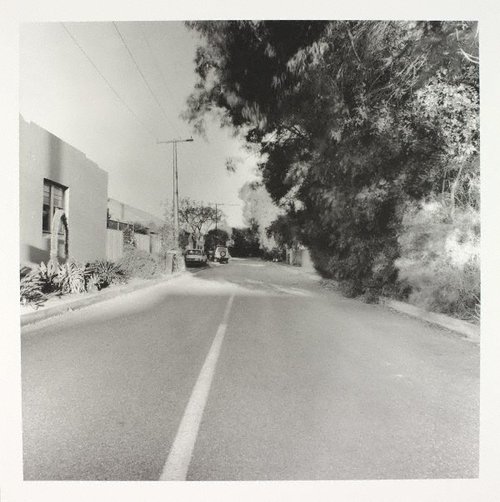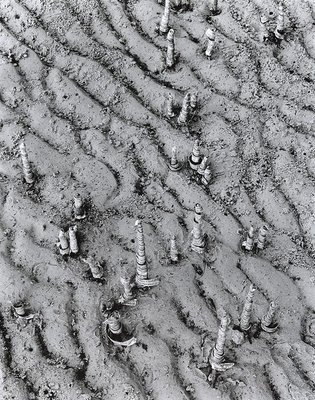
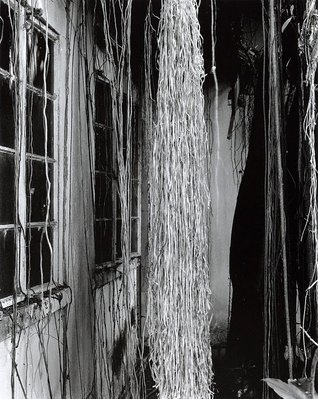

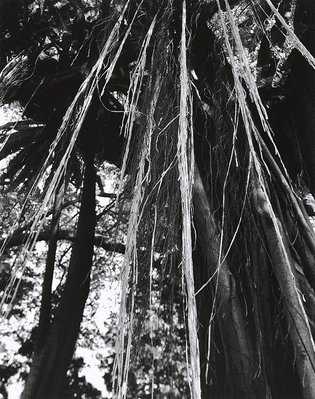


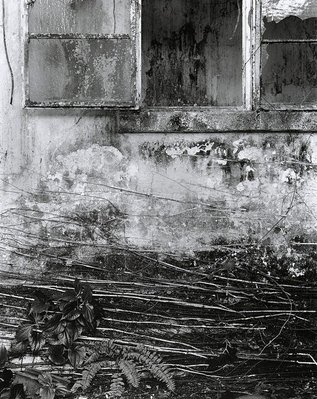
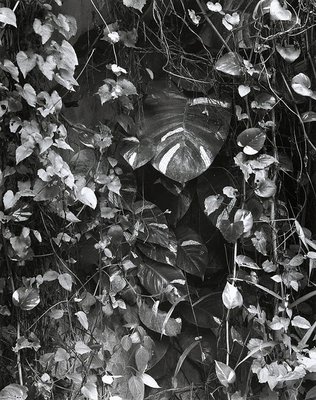
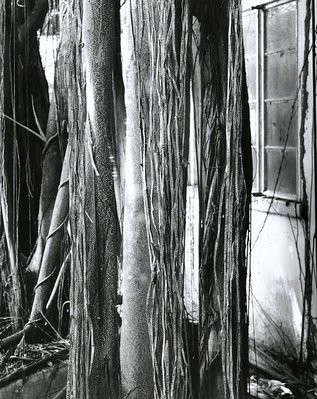

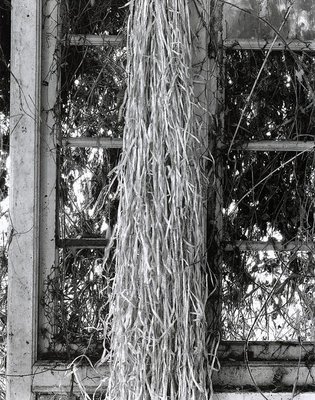

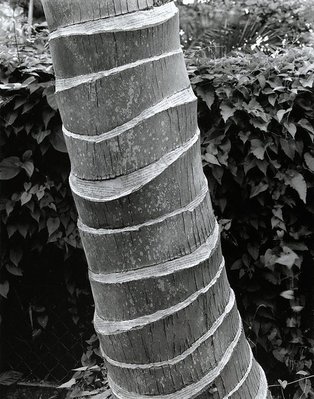

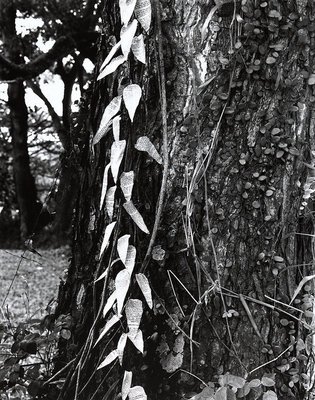
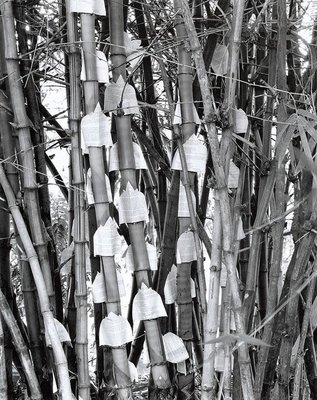
-
Details
- Date
- 1996-1998
- Media category
- Photograph
- Materials used
- 16 gelatin silver photographs
- Edition
- 15
- Dimensions
- 16 photographs: 120.0 x 95.0 cm each; 161.3 x 129.2 cm frame
- Credit
- Purchased with funds provided by the Art Gallery Society of New South Wales Contempo Group 2003
- Location
- Not on display
- Accession number
- 32.2003.a-p
- Copyright
- © Simryn Gill
- Artist information
-
 Simryn Gill
Simryn Gill
Works in the collection
- Share
-
-
About
Through photographs, objects and installations Simryn Gill considers how we experience a sense of place and how both personal and cultural histories inform our present moment. Her work also suggests how culture becomes naturalised, an almost invisible part of our physical environment.
Gill often works with books, narratives and texts that provide a framework through which we order and describe the world around us. 'Forest', has the appearance of an etymological proposition where Gill quite literally takes printed words back to roots. Not their roots, as in the source of their meaning, but rather the growing, evolving, decaying nature from which the raw material for books is derived. Gill tore up the fibrous matter of book pages and grafted fragile strips of text into the natural environment. Attached to tropical plants, they look like natural forms, becoming exuberant banana florescences, dangling aerial roots on fig trees, mangroves emerging from mudflats, variegations on the leaves of lush tropical foliage and decaying vegetation at the base of epiphytic ferns. The original plant interventions occurred in places where a tamed nature was in the process of becoming wild again, in decrepit gardens and decaying buildings in Malaysia and Singapore. There is something of a 'lost cities' quality to these works, as nature is in the process of reclaiming culture if not civilisation.
Gill's photographic records of her interventions recall botanical drawings and are printed in subtle tones of gray. In keeping with their observational purpose, they depict space up close and there are no vistas, faraway horizons or the distant sublime. They have something of the claustrophophic closeness and rank fecundity of tropical vegetation, which taxed the romantic imaginations of the 19th century. Gill's text has only a brief life out in the landscape as, if it is not eaten by insects, it rapidly rots away under the onslaught of the elements. While we may suspect that culture is impermanent, evolving and probably contingent, we do not really expect such classics as 'Frankenstein, The origin of species or Robinson Crusoe' to become 'cultural compost'. Gill has developed a form of wood-pulp fiction in which she 'literalises the landscape', stories and legends have taken root off the pages of books and grown into a fantastic local flora of transplanted narratives.
-
Audio
Forest - Simryn Gill 1:16
-
Exhibition history
Shown in 2 exhibitions
Simryn Gill: selected works, Art Gallery of New South Wales, Sydney, 27 Jul 2002–22 Sep 2002
Unscripted, Art Gallery of New South Wales, Sydney, 20 May 2005–24 Jul 2005
-
Bibliography
Referenced in 11 publications
-
Art Gallery of New South Wales, Art Gallery of New South Wales annual report 2003 [for the year ended 30 June 2003], 'Year in review', pg.14-35, Sydney, 2003, 2 (illus.), 18, 19 (illus.). illustration on page 2 is a detail of [m] and page 19 is of [b]
-
Cornelia Butler, Flight patterns, 'Migration and movement', Los Angeles, 2000.
-
Lee Weng Choy, Art Asia Pacific, 'Local coconuts: Simryn Gill and the politics of identity', 1997.
-
Catherine de Zegher (Editor), Here art grows on trees: Simryn Gill, [Front matter, pg. 0-27, Sydney, 2013, 5-12 (illus.), 276. illustrations of m, d, b, n, g, a, c and f
-
Richard Grayson, Simryn Gill, 'Views from the Islands', London, 1999.
-
Kajri Jain, Beyond the Future, the Third Asia-Pacific Triennial of Contemporary Art, 'Simryn Gill', pg.204, Brisbane, 1999, 204.
-
Marian Pastor Roces, Art &Text (no.56), 'Simryn Gill: slow release', 1997.
-
Jane Somerville, Look, 'Where to now, Contempo?', pg.28-31, Sydney, Jul 2007, 30, 31 (illus.). illustration is of part g
-
Jill Sykes, Look, 'Marking year's end', pg.31, Sydney, Dec 2003-Jan 2004, 31 (illus.). illustration is of m and n
-
Wayne Tunnicliffe, Simryn Gill: selected works, 'Self selection', pg.5-11, Sydney, 2002, 4 (illus.), 8, 13-14, 38-43 (illus.). illustrations are not of all 16 works
-
Wayne Tunnicliffe, Contemporary: Art Gallery of New South Wales Contemporary Collection, 'Cultural memory, critical distance', pg.154-203, Sydney, 2006, 168 (illus.), 473 (illus.). illustrations on pg.168 are of e, g and p and on pg.473 of n
-



